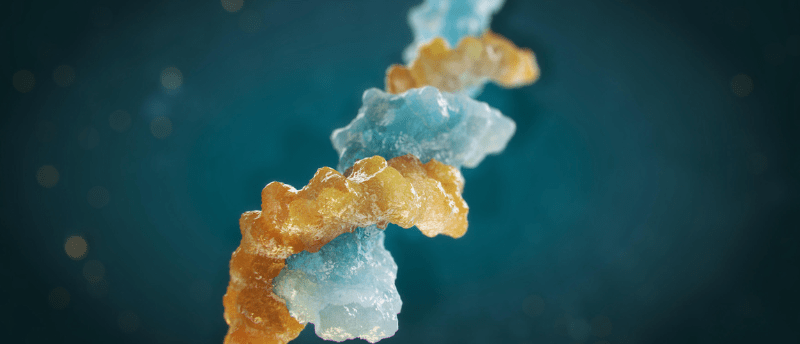Webinar Q&A follow-up: A masterclass in advanced analytical assays for bioanalysis of oligonucleotides

Thank you to everyone who attended our webinar: ‘A masterclass in advanced analytical assays for bioanalysis of oligonucleotides‘. Below are the speaker’s response to the questions posed during the live event. We hope this is a useful resource and thank our attendees and our speaker, Rathna Veeramachaneni, for her insight.

Rathna Veeramachaneni, PhD
Director, Biopharma LC-MS/MS
KCAS Bio (KS, USA)
Rathna J. Veeramachaneni is currently the Director of Biopharma LC-MS/MS at KCAS Bio. Rathna’s prior experience included working in the pharmaceutical and CRO space, developing quantitative methods for small and large molecule therapeutics and biomarkers. Rathna received her PhD from Duquesne University (PA, USA), working on crosslinking combined with proteomic mass spectrometry for identification of structural conformational changes in membrane ion channels.
Rathna has worked on many different biopharmaceutical modalities such as oligonucleotides (antibody-oligonucleotide conjugates, duplexes and antisense oligonucleotides), monoclonal antibodies, antibody-drug conjugates, fusion and chimeric proteins, as well as biomarkers for both small and large molecules, including glycosphingolipids lipids and eicosanoids. Rathna has significant expertise in hybrid LC–MS/MS, both at the protein and peptide level, along with more traditional LC–MS/MS assays utilizing protein precipitation, digestions and SPE approaches. Her therapeutic area of expertise includes indications of cancer, inflammation, neurodegenerative and rare diseases.
Rathna is passionate about using the best science to help drive and support the drug development process and advocates customized strategic approaches by incorporating notable advancements in the ever-growing field to find creative solutions that are better, faster and/or more efficient.
How does a 2-day extraction work for you? Do you use the first day for digestion with Proteinase K and then finish the processing in the second day?
For a 2-day extraction, we typically perform a proteinase K digest overnight followed by SPE clean-up on day two.
Can you explain why a quadratic regression fits better than other models?
Typically, a simplest best-fit is what we look for in assigning a regression. When we work with antibody RNA Conjugates (ARCs), a protein immunoprecipitation extraction is performed to quantitate the conjugated oligo. For protein immunoprecipitations, depending on the range we are using, a quadratic fit seems to work better than a linear fit.
How big is your batch size? Do you keep it small in order to avoid significant drift in the MS response across the batch when the batch size is >200 injections?
We test for 1 plate (96 injections) versus 2 plate (192 injections) for robustness of the assay. But typically, we keep it to <200 injections for batch size for sure. Based on the reproducibility of the assay, we limit it to 1 plate (96 injections) if need be.
How often do you use analog-IS (internal standard) versus isotope labelled?
For oligos, we develop and validate quite a few assays using the analog-IS. I would say in our experiences about 1 of 10 assays have a stable label and 9 of 10 assays are using analog-IS at this time.
Could the increase in sensitivity from DIPEA over TEA come from the decrease in the volatility of the modifier? Have you tried using non-evaporative caps on your solvent bottles?
Our lab is equipped with non-evaporative caps for the solvents and theoretically that generally helps keep the organic solvents consistent over a period of time. DIPEA is bulkier than TEA and sometimes can help with non-specific interactions compared to TEA and can result in better sensitivity and/or less interference peaks and therefore may help with a better Lower Limit of Quantification in some cases.
With the comparison of enrichment treatment agents, were all of the extractions followed by WAX SPE for clean up?
For total anti-sense assays, we have typically used WAX SPE clean-up. For ARC-AS (ARC associated anti-sense) assays, we typically use immunoprecipitation for the enrichment step followed by a base dissociation step before LC-MS/MS analysis.
What analytical columns are used?
We use a few columns including Phenomenex BioZen and Thermo DNAPAc columns.
What kind of labels do you get for the internal standards?
Typically we order a deuterated version of the molecule and also make sure that the charge state is taken into consideration to not have cross-talk between both analyte and IS channels.
Have you had success not using IP/hybridization to pull down analyte first? Have you had success without upfront prep or is this generally necessary?
Yes. We use IP approaches all the time when it comes to ARCs. For duplex and total anti-sense assays, we have tested hybridization approach using the PNA probe. Depending on the type of molecule, we may need to do some upfront steps before the pull down to ensure the ASO is available to be pulled down.
The opinions expressed in this Q&A are those of the speaker and do not necessarily reflect the views of Bioanalysis Zone or Taylor & Francis Group.
In association with:

